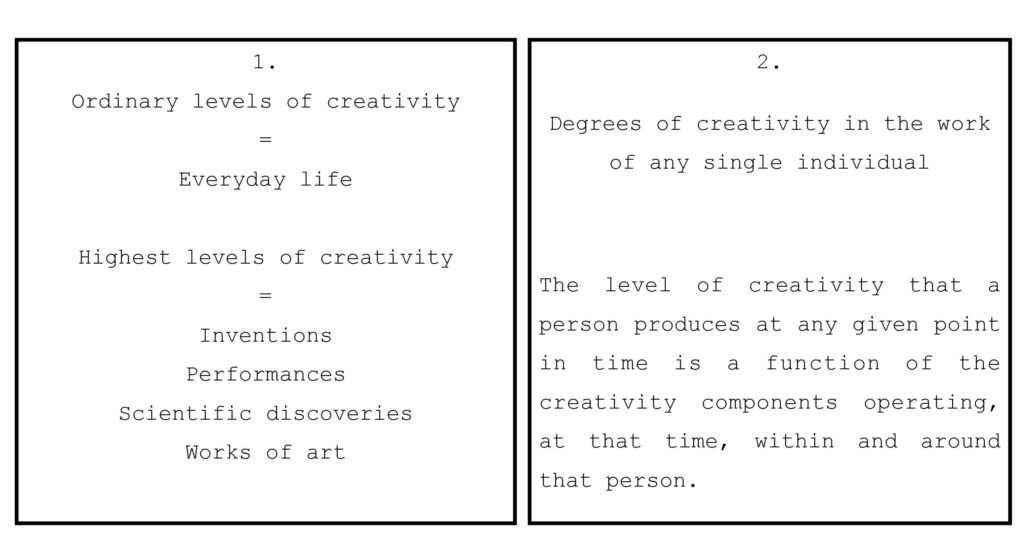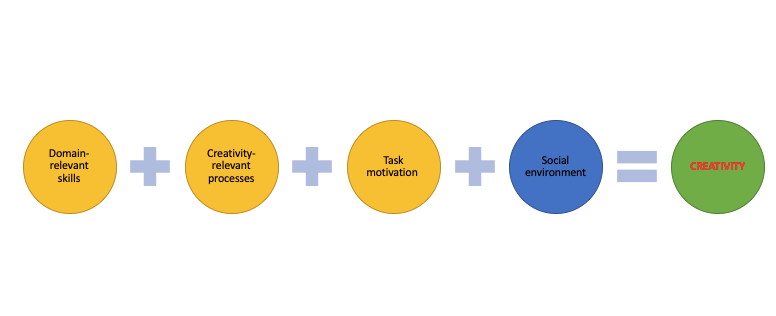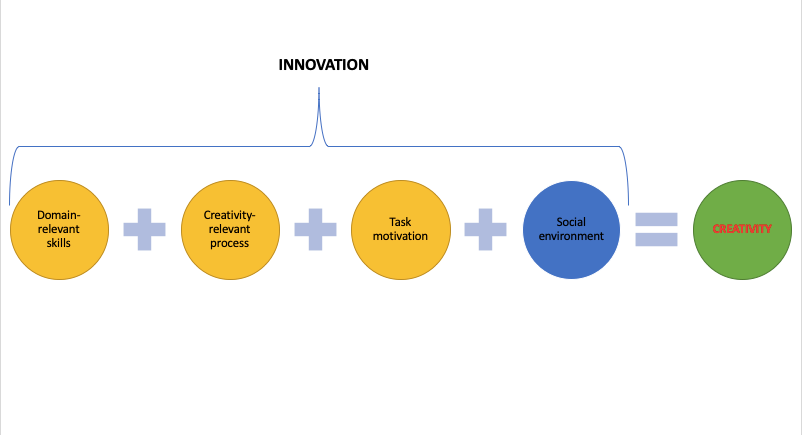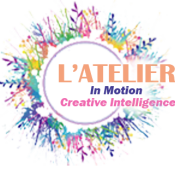
Creativity is seen as innate intelligence, which I believe connects all the diverse ways of learning of human beings.
The componential theory of creativity was articulated by Teresa Amabile in 1983.
It describes the creative process and the various influences on the process and its outcomes.
Two important assumptions underlie the theory

The Components of Creativity
The influences on creativity include three within-individual components, and one outside.

The theory specifies that creativity requires a confluence of all components; creativity should be highest when an intrinsically motivated person with high domain expertise and high skill in creative thinking works in an environment high in supports for creativity.
Children achieve their inherent right to reach their potential, happiness, and success in Reggio Inspired & Montessori schools, developing in collaboration with adults a new culture of childhood and education.
Emotion influences how people feel, behave and think when experiencing designed objects, services, and events.
All four of the creativity components influence the creative process and help children to develop it, especially in Reggio Inspired & Montessori schools.
The process consists of several sub-processes:
- Analyzing;
- Articulating the exact nature of the problem to be solved;
- Preparing to solve the problem by gathering information;
- Improving any required skills;
- Generating ideas for solving the problem;
- Testing or validating the chosen solution;
- Communicating that solution to others.
This sequence is not rigid, and the sub-processes can process in a different sequence and will often recur iteratively until a creative outcome has been attained.
In 1988, Amabile published an extension of the theory to encompass both creativity and innovation.

It will be followed in the next article…
